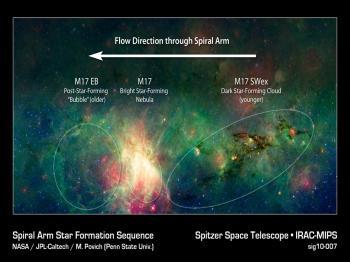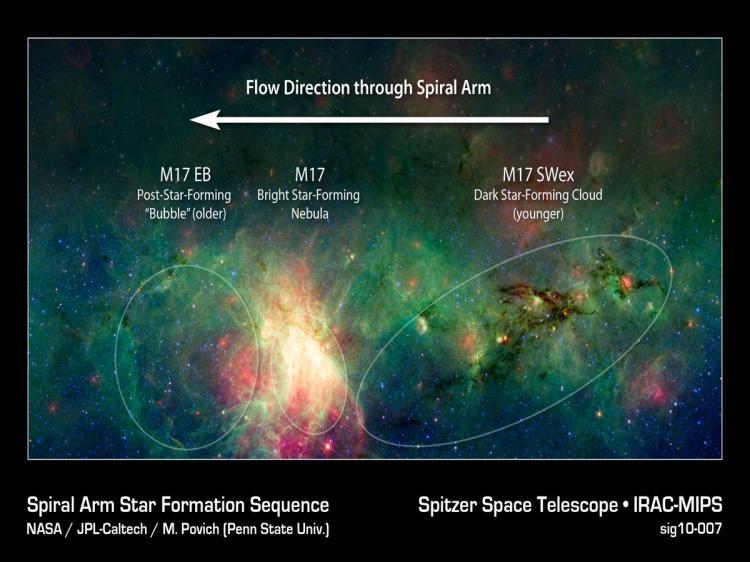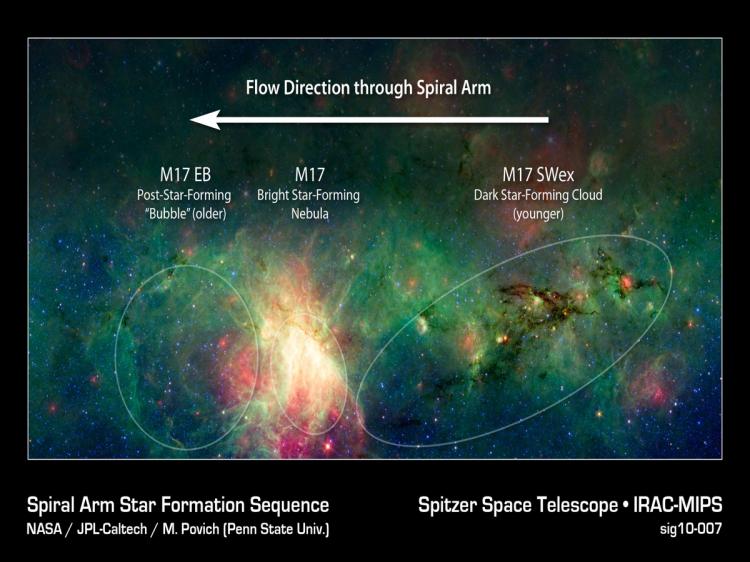Hundreds of stars larger and hotter than our sun are on the brink of forming in one of the most active star forming regions of the Milky Way, according to U.S. astronomers. The discovery made using NASA’s Spitzer Space Telescope could help our understanding of how and when massive stars form.
The research published in The Astrophysical Journal Letters revealed that a dragon-shaped cloud of dark matter named M17 SWex and located within the constellation Sagittarius was a star factory in the early stages of production.
“We hope that astronomers will use M17 SWex as a new laboratory for studying the mystery of how massive star formation really happens,” said lead author Matthew Povich of Penn State University in a press release. “Most very young clouds being studied don’t have as much going on as this one does.”
The dark cloud was first discovered over 30 years ago, but it wasn’t until astronomers utilized Spitzer’s powerful infrared imaging capabilities that the stellar nursery within it was brought to light.
The research published in The Astrophysical Journal Letters revealed that a dragon-shaped cloud of dark matter named M17 SWex and located within the constellation Sagittarius was a star factory in the early stages of production.
“We hope that astronomers will use M17 SWex as a new laboratory for studying the mystery of how massive star formation really happens,” said lead author Matthew Povich of Penn State University in a press release. “Most very young clouds being studied don’t have as much going on as this one does.”
The dark cloud was first discovered over 30 years ago, but it wasn’t until astronomers utilized Spitzer’s powerful infrared imaging capabilities that the stellar nursery within it was brought to light.






